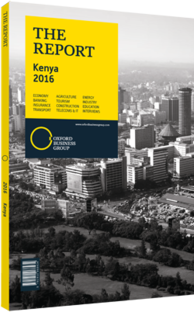A new FTA holds much promise for Kenya if the initial hurdles can be cleared
After seven years of negotiation, the signing of the Tripartite Free Trade Agreement (TFTA) in June 2015 is being heralded by many in Kenya as a turning point in regional integration. The TFTA is an integration initiative pursued by three of the continent’s regional economic communities – the EAC, the Common Market for Eastern and Southern Africa, and the Southern African Development Community.
The agreement will create a 26-member integrated economic entity covering 17.3m sq km and creating a market of 632m people. With a combined GDP of $1.2trn, the new trade bloc would account for around 60% of Africa’s economic activity.
The agreement also establishes a framework to incorporate Central and West African nations that were excluded from the initial agreement at a later date, paving the way for an even larger trading zone.
While progress has been made in recent months, the agreement still has several hurdles to overcome. All countries have yet to sign the final agreement, and the TFTA will still need to be ratified by the legislatures of each state. National laws and tariff structures will also need to be adjusted to reflect the terms of the deal, as negotiations continue over rules of origin, trade remedies and dispute settlements.
Mixed Results
In particular, Kenya’s industrial and manufacturing sector is likely to be reignited by greater access to the TFTA market. However, the effect it will have on other sectors is less clear. Many countries included in the agreement depend heavily on agriculture, including Kenya, where it accounts for 27% of GDP, 20% of formal jobs and more than half of total employment. Agricultural products in sub-Saharan Africa enjoy an average tariff of 24.9%, according to the World Bank’s Overall Trade Restrictiveness Index, compared to an overall average tariff of 14.4%.
Perhaps having foreseen the difficulties inherent to liberalising the sector, the signatories of the agreement restricted the movement of goods that were deemed “sensitive,” many of which are agricultural products, until at least 2017.
Agricultural goods like sugar, maize, wheat and rice will be subject to duty and quota restrictions, as will other products such as cement, plastics, electronics and paper. The intention is to give these industries time to adjust to increased competition from players in other markets included in the TFTA.
Challenges & Solutions
Other aspects of the deal have prompted concerns about its feasibility. The sheer scope of what the TFTA aims to achieve – the unification of extremely different economies and regulatory frameworks – is a bold goal, particularly in a region often characterised by institutional inefficiencies. According to Transparency International’s annual survey on the perception of corruption in the public sector, sub-Saharan African countries consistently rank as some of the worst performers in the world. For its part, Kenya ranked 145th out of 174 nations in 2014, compared to 136th in 2013.
Infrastructure
A lack of transport infrastructure and connectivity could be another stumbling block for intra-regional trade growth. In East Africa, transport costs are estimated to be 60% higher than in the US and Europe. According to the 2015 East Africa Logistics Performance Survey, the average dwell time for a container in the ports of Dar es Salaam and Mombasa was nine and five days, respectively, compared to a global average of three days.
This, however, may be an area in which the bloc can improve. Across the continent, a raft of large-scale transport infrastructure projects are under way. This should ease some of the stress on road networks, which are the primary means of transporting goods across Africa. In Kenya, ongoing projects include the $4bn Mombasa-Nairobi railway, the $24.5bn Lamu Port-Southern Sudan-Ethiopia Transport Corridor, and upgrades and expansions to the Port of Mombasa and the country’s airports (see Transport chapter).
You have reached the limit of premium articles you can view for free.
Choose from the options below to purchase print or digital editions of our Reports. You can also purchase a website subscription giving you unlimited access to all of our Reports online for 12 months.
If you have already purchased this Report or have a website subscription, please login to continue.

